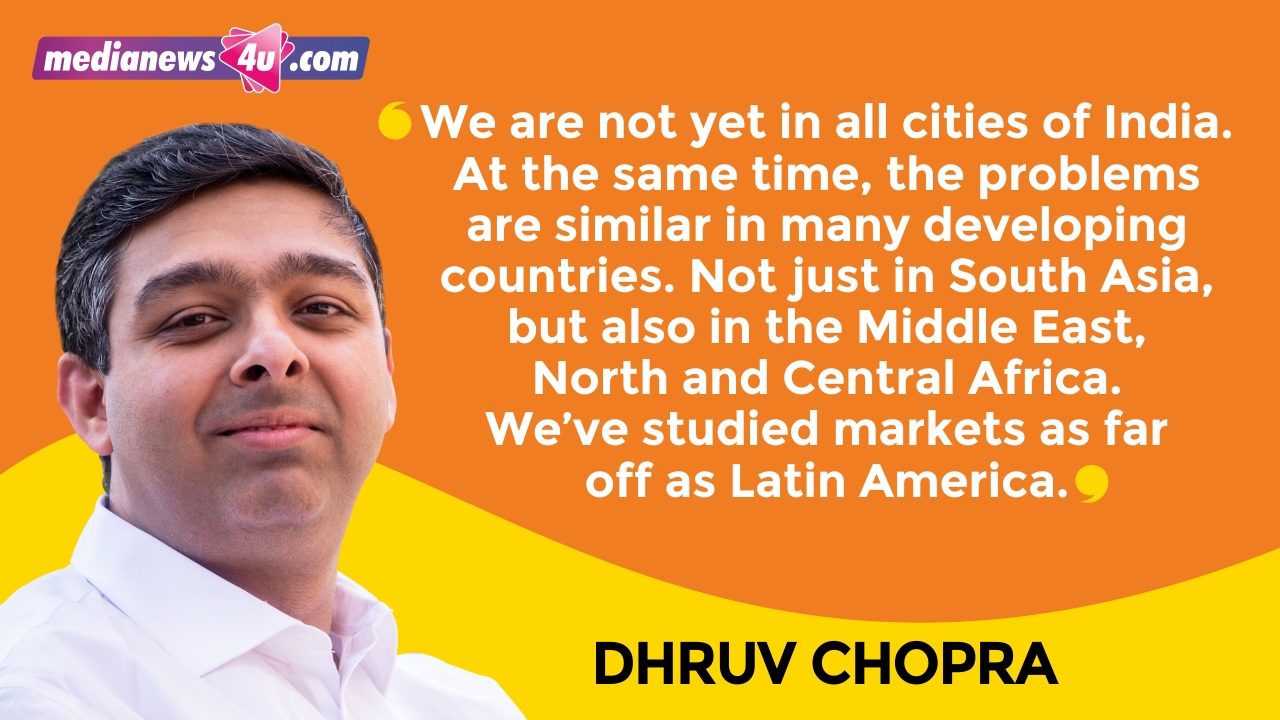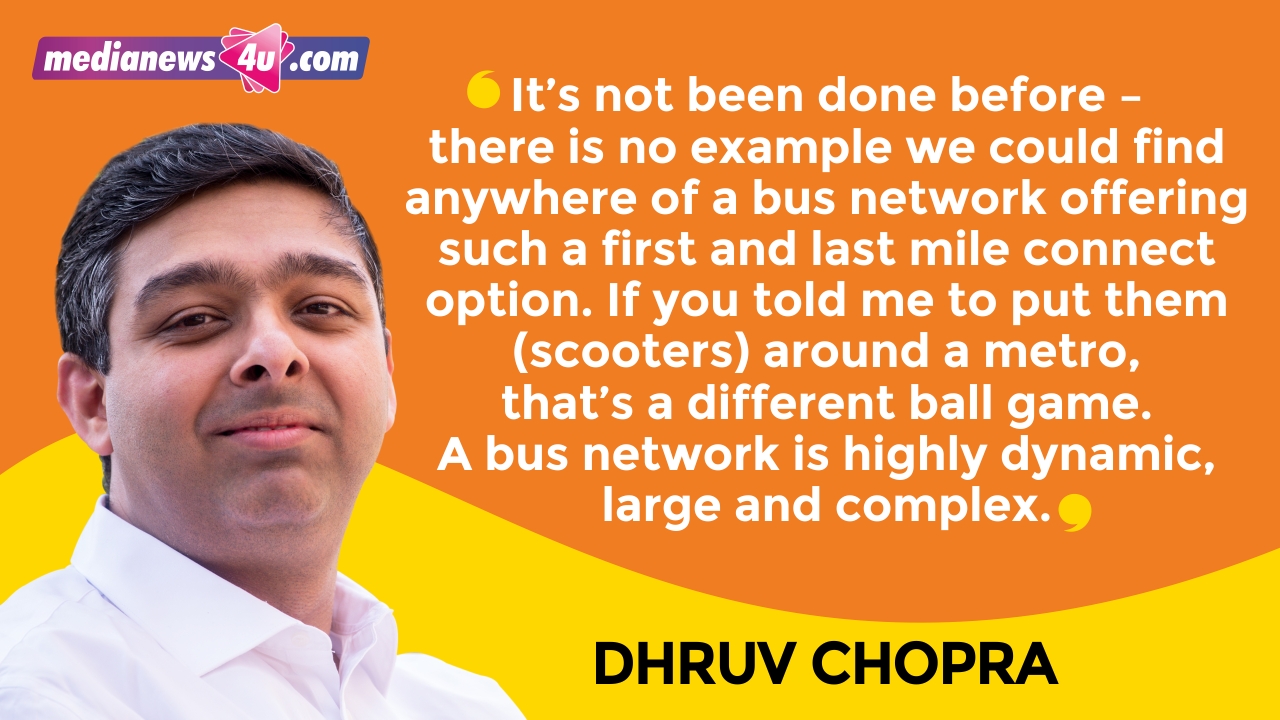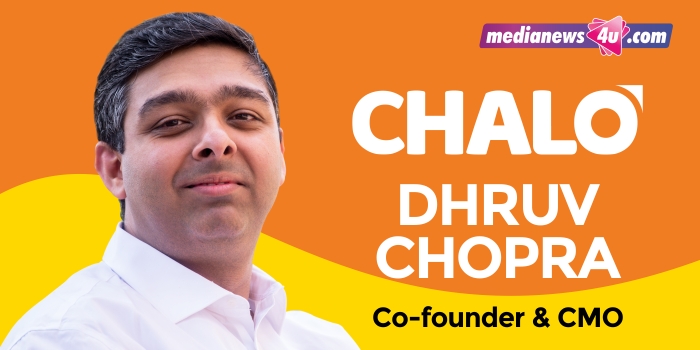‘Is this what we want to do? Put more cars and bikes on the road? Only 2 to 3 pc of Indians (approximately) can afford to buy a car and 7 or 8 pc a bike. Another 7 or 8 pc can hire a taxi or auto. All of that together would be just above (say) 15 pc. How does the rest of India travel?’
That was the thinking that resulted in the creation of the Chalo app in 2014, with the initial version providing information to help commuters plan their journey from point A to B, explains Dhruv Chopra, Co-founder and CMO. He came on board in 2019 to join Chalo’s Co-founder and CEO Mohit Dubey, who was Co-founder and CEO at Carwale and Bikewale.com prior. Chopra was CMO there too.
“48 per cent of all travel that happens in India are bus trips. It is true for all cities, globally, even those with established metro networks. If metros are the spine, buses are the nervous system of large cities,” adds Chopra. Underlining his point, he cites data from London – more than half of all tube passengers in the UK capital get off a London bus.
Soon it dawned upon the team that merely providing route information was not enough for bus travel, which operated unlike the relatively more reliable metros or even local trains. Providing timings was pointless, when that schedule was hardly kept. Live tracking of buses followed, with digital tickets following suit.
After four years of developing the tech stack, the first entire city where the brand was able to digitise bus journeys was Bhopal in May 2018, followed by Indore soon after. In one year of launch, ridership increased by 20 to 25 pc in both places.
In Indore, Chalo enabled buying of bus passes on the app. In three days of making it available, 25 pc of bus passes were issued on the Chalo app – with zero marketing, explains Chopra. No one wanted to wait 30 to 40 minutes at the few designated counters during office hours.
Today the Chalo app is at work in 51 cities and towns, including two in the Philippines and one in Thailand’s capital.
“We are not yet in all cities of India. There is a lot of work still to be done. At the same time, the problems are similar in many developing countries. Not just in South Asia, but also in the Middle East, North and Central Africa, in the country of South Africa. We’ve studied markets as far off as Latin America. We’ve built the technology to solve for India (and reworked the tech stack for different markets in India). We can keep building for different scenarios,” explains the CMO.

Growth seems to be in line with the expanded offerings and market presence. The platform tracks 15,000 buses that translates into 150 million rides a month. Chalo saw 1 to 2 million app sessions per month two years ago. This figure grew to 10 million a month around 15 months ago. It stands at 50 million today.
A third of commuters use the live tracking feature in Chennai and this number is expected to be close to 45 to 50 pc in places like Indore, where the service was launched earlier.
The BEST Story
In Mumbai, where the app was launched about 15 months ago, almost one out of every three bus passengers uses the Chalo app – over 10 lakh of the 35 lakh commuters use it everyday. More than 20 pc of all tickets sold are through the app. Chalo’s launch saw a corresponding increase in daily bus ridership by 55 pc from 22.5 lakh.
Supporting the launch in Mumbai was a much appreciated ad campaign featuring cricketer Sachin Tendulkar and actor Anil Kapoor. The campaign saw them recall their journeys via BEST buses in their early days. Every detail like the bus routes, numbers and schedules were reconstructed to the minute detail, recalls the Co-founder.
“Sachin Tendulkar and Anil Kapoor donated their time for BEST. Through the nostalgic films, they shared their true stories. The campaign did two things. The perception of bus services of Mumbai fundamentally changed to being tech friendly and ready to evolve. A lot of the love for BEST and the feeling of pride was restored. We would also not have got the kind of response if it had not been for that kind of messaging,” he explains.
The perception shift has been helped by the launch of new products by BEST and several initiatives like a recent campaign for 75 years of the service, he adds.
In Mumbai alone, Chalo has in its fold 3,500 buses, a number that is set to go to 10,000 in three years. In its smallest markets, it has as less as 100 buses. In cities like Mumbai where half the fleet is air-conditioned, the app’s listings with facilities on each bus offers consumers choice. There is a luxury service and aspects like seat availability also act as incentives to use the app.
Geographic expansion is on the cards but it is calibrated and dictated by the dynamics of each city or town and its transport organisations.
“We would love to be in every single city in India and around the world where our tech stack is relevant,” observes Chopra.
The First and Last Miles
Chalo is looking to own not just bus travel, but also the first and last miles. It acquired app-based office bus service Shuttl in October 2021 and scooter rental service VOGO in March 2022. While Shuttl expands to cover one more key base through buses in multiple cities, VOGO (Vehicle-On-The-Go) covers the distance from public bus networks with an hourly rental model.
VOGO was launched in 2015. It had operated in Hyderabad and Bengaluru before Covid struck. The strategy now is to grow in Mumbai before expanding geographically once again. The 1,000 bikes deployed in Mumbai have seen healthy adoption from users, reveals Chopra.
VOGO’s entire fleet is now being transformed to e-bikes under Chalo. The company takes pride in the fact that it clocks 2.5 lakh carbon-neutral kilometres each month. But it is wary of building scale too fast and would rather grow gradually armed with learnings.
“It’s not been done before – there is no example we could find anywhere of a bus network offering such a first and last mile connect option. If you told me to put them (scooters) around a metro, that’s a different ball game. A bus network is highly dynamic, large and complex. So we are taking our time,” he explains.

While it scales, among learnings is the fact that younger users – under 45 years – are more likely takers. No surprises there. It’s a mix of office goers and college students, for whom it saves time and works out cheaper than an auto or cab, reasons the marketing head.
“We are seeing very high repeat usage. It works out to about Re.1 a minute, and people preload Rs.100 or Rs.300 or so on upfront and use it multiple times. The usage right now is higher than VOGO ever had before,” he notes.
“We’ve been quite encouraged by the response. More than two lakh people have used it already. It gets used immediately – as soon as we can put them up. We plan to have 5,000 by the end of the year,” he surmises.
(First published by The Free Press Journal BrandSutra. Content powered by MediaNews4u.com. Feedback: [email protected])

















